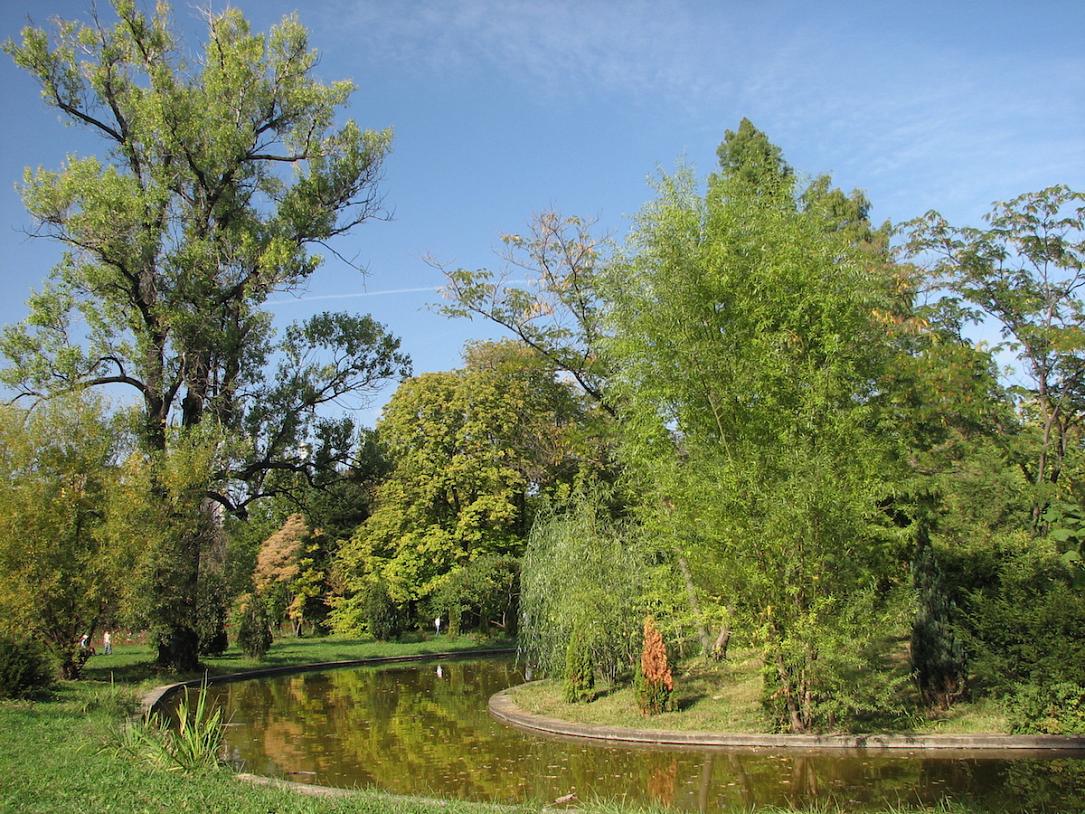Bucharest Centennial: The Botanical Garden, host of Great Romania’s flora



The Botanical Garden is one of the oldest and most important institutions in Bucharest. Opened nearly 160 years ago – more than 60 years before the Great Union of 1918, the historic event whose centenary is celebrated this year – the Botanical Garden is an important landmark in the capital.
In this Garden, a symbolic union happened well before that of 1918: this is where plants from all over Romania have been living and continue to live, together. Snowdrops, irises, peonies from the regions of Dobrogea or Southern Muntenia, the Dobrogea olive tree, marigolds, fig trees, lavender from Oltenia and Banat regions, plants from mountain areas, they all exist in the Botanical Garden alongside species of plants from all over the world.
In the past 100 years, the Botanical Garden has seen Bucharest become the capital of Great Romania, has grown continuously with plants from all over the country, and survived the two world wars that marked the history of Romania.
The story of the Botanical Garden in Bucharest begins in 1860, when Carol Davila, the famous Romanian doctor, and forefather of the Romanian medical university education, founded the institution. Since then, this place dedicated to nature went through many tests of history and major changes before becoming what it is today: one of nature enthusiasts’ special places, right in the middle of the city, a place where nature meets history.
The first Botanical Garden was established near the Faculty of Medicine and covered a relatively small area of about 7 ha. The first two directors of this institution were botanist Ulrich Hoffmann and Professor Dr. Dimitrie Grecescu.
In 1874, the Botanical Garden moved to the city center and came under the University of Bucharest umbrella, under the leadership of Professor Dr. Dimitrie Brândză. He was the third director of the institution and the one who, in 1884, managed to move the Botanical Garden in the space it occupies today. At present, the Garden is located in the Cotroceni neighborhood, near the Cotroceni Palace - residence of the President of Romania.
Arranging the new premises also included the first greenhouses, inspired by the Botanical Garden in Liege, as well as setting up the main plantations of trees and shrubs.
The Botanical Garden was officially inaugurated in its current location in 1891, but its story took a sad turn a year later when it was flooded.
Later on, the two world wars also left their mark on the Garden. During World War I (1916-1918), the space was used by German occupation troops and many of the Botanical Garden’s equipment, such as the lab equipment and power plant components, were requisitioned.
During World War II, the Botanical Garden was affected by the Anglo-American bombing of April 4, 1944, which severely damaged the existing buildings and destroyed plant collections and outdoor spaces.
The old greenhouses were also affected by the two world wars. During World War I, the collections of plants housed in the greenhouses suffered because of a complete lack of fuel necessary for their heating. At the end of this war, which was soon followed by the Great Union on December 1, 1918, the Botanical Garden needed much care and investment.
So, in the last century, it went through several stages of development. A new production complex was added to the Garden, a new Botanical Institute was built in 1960 and the new Botanical Museum was inaugurated in 1978. Then, in 1994, the Botanical Garden of the University of Bucharest was named after Professor Dr. Dimitrie Brândză. The greenhouse complex was also revamped between 2008 and 2014.
Nowadays, the Botanical Garden “D. Brândză” is much more than a place of recreation or relaxation, as it covers three major directions: education, scientific research and the promotion of cultural values. Its 18.2 ha are divided into several sectors (both indoors and outdoors), such as the outdoor sectors dedicated to decorative plants, rare plants or Mediterranean plants, the Italian Garden and Dobrogea’s Flora, the rose garden and the Grandmother’s Garden sector.
Visitors can also enjoy indoor spaces such as the exhibition greenhouse, which hosts plants originating in tropical, subtropical and equatorial areas, the old greenhouse, which was built under the guidance of Belgian architect Louis Fuchs between 1889 and 1891 on 760 sqm, and the Botanical Museum, founded by professor dr. Dimitrie Brândză in 1882.
This year, the institution organizes the Historic Garden project, through which it tries to bring back to life, with the help of volunteers, ancient plants from all over Romania.
How to get there:
The Botanical Garden „D. Brândză” is located at 32 Cotroceni road. Buses with stops nearby: 61, 62, 69, 90, 91, 93, 96, 236, 336 and N115.
While in the area, you can also visit the Cotroceni National Museum.
Sources: Gradina-botanica.unibuc.ro, Wikipedia
Photo source: Adobe Stock